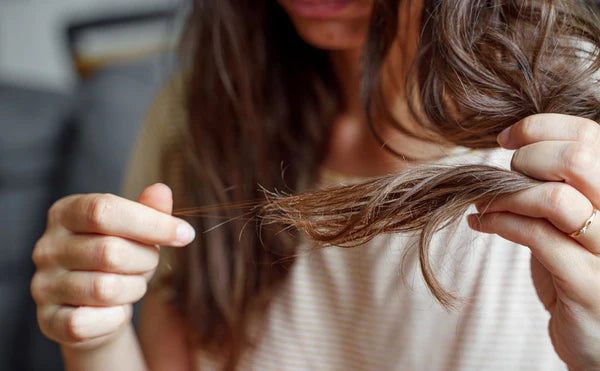Porous hair is something you either have naturally or you don't. Porosity refers to the absorption capacity of your hair . If you're unfamiliar with the term " porous hair ," stop here to learn about the differences in hair porosity .
What is hair porosity?
Hair can have high or low porosity. This ability to absorb and retain moisture also affects the absorption of chemicals such as hair dyes. So you need to know the porosity of your hair before coloring it. Porosity, like hair type, can be genetic.
Even if you've never treated your hair, you may have very porous hair. Coarser, thicker hair tends to be very porous, but that's not always true. Sometimes they are extremely non-porous.
However, your hair type isn't the only thing that determines your porosity. Texture, color and previous chemical treatments can affect your hair's current porosity. It can change when your hair becomes worn and damaged from over-processing.
How to care for high porosity hair?
Follow these tips if you know your hair is already damaged and want to revitalize it without paying for expensive salon treatments:
- Use low or no heat . If your hair is very damaged, avoid all heat. Try to air dry your hair as often as possible. If you must use a hair dryer, use it on low or even cool heat.
- Revitalize them deeply . Try deep conditioning treatments to help protect hair.
- Try different low-effort hairstyles . This means that you should keep your natural hair as long as possible. Most damage is caused by overprocessing. The new growth should be healthy since it hasn't been harmed if you use minimal products (ideally none) in your hair for a while.
- Try a hair mask . Highly porous hair is very absorbent. If you use conditioning and protein treatments (like a hair mask), they should absorb these products easily as well. You can quickly regain healthier hair if you continue to use treatments.
Causes of high porosity hair
To prevent your repairs from being undone, you need to know how you can damage your hair. Remember, high porosity hair means damaged cuticles. Here are the possible causes:
- Excessive discoloration
- Over-Processing: Any over-processing or regular hair treatment (like regular dyes) that uses chemicals can damage the cuticle.
- Frequent heat treatments
- Salt water
- UV damage
- Regular blow-drying or permanent straightening treatments
Determine the porosity of your hair
Now that you know that you will need to adjust the coloring time based on your hair porosity, you should probably know what your hair porosity is. It's easy to determine your hair type. There are some simple porosity tests you can perform yourself. None of these tests should take you more than a minute.
The touch test
One way to quickly assess porosity is to take a section of your hair between your fingers and run them along the section, starting from the ends, towards your scalp. Your hair is porous if it is bumpy instead of straight.
You probably also have frizz, split ends, and brittle hair . The cuticles of porous hair are lifted or raised. Even if you can't see that it is lifted, you will feel that your hair is not straight.
The water test
You can also try the water test if you are unsure after testing your hair. The water test is also easy to perform. You will simply watch your hair flow or float. Take a transparent cup and fill it with water. Take a section of your hair and place it in the water.
If your hair immediately sinks to the bottom, it is very porous because it immediately took on water. It is moderately porous if it sinks slowly and probably doesn't even reach the bottom. They are not very porous if they remain floating at the top.
Find out more ways to determine your hair porosity .



